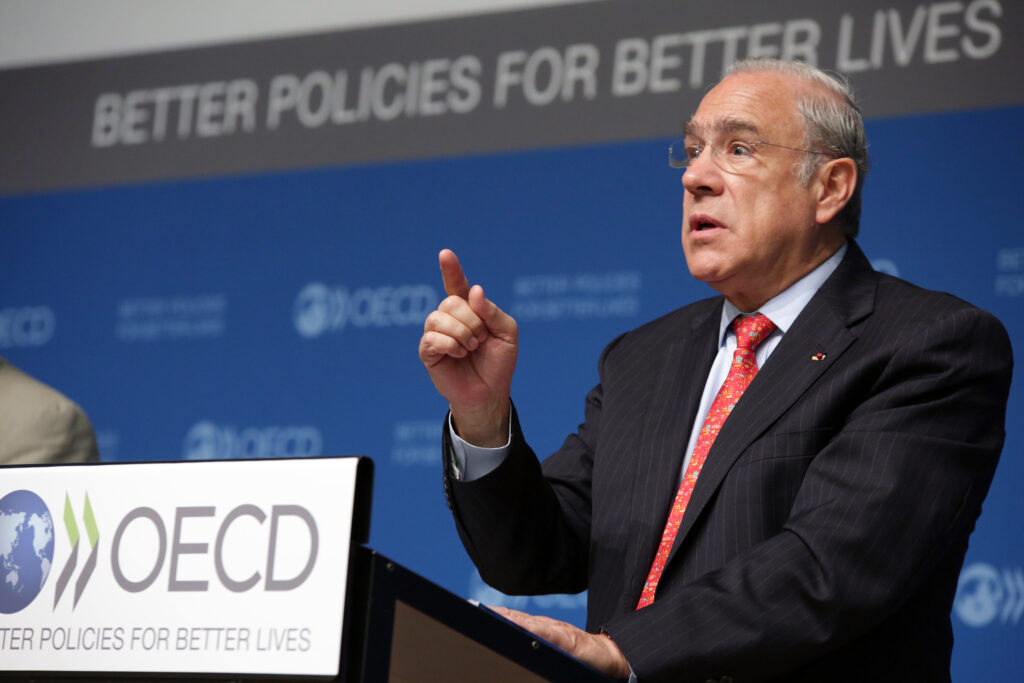The European Union (EU) has recently undergone a significant development in its approach to corporate taxation. As of 1 January 2024, any company active in at least one of the 27 EU states and with annual revenues of at least €750 millions will face a minimum corporation tax rate of 15%. Also known as the “Pillar 2 Directive,” this recently adopted legislation is the result of a global effort to foster equity and limit harmful tax practices.
This global deal, led by the Organization for Economic Cooperation and Development (OECD), has been signed by nearly 140 but thus far ratified by only a few.
A solution to low-taxed corporate income
On the international stage, the OECD has played a crucial role in shaping the discourse around corporate taxation. First, the organisation identified base erosion and profit shifting (BEPS) whereby multinational enterprises (MNEs) exploit gaps and mismatches between different countries’ tax systems to retain higher profits. This practice often leaves developing countries disadvantaged as they more likely rely on corporate income tax. Addressing BEPS has thus been treated as a matter of equity and the redistribution of wealth.
Since 2021, over 140 countries have negotiated the OECD/G20 Inclusive Framework on BEPS. To achieve fair taxation, a two-pillar solution has been developed. While Pillar One addresses where MNEs pay taxes, Pillar Two introduces a minimum global taxation rate of 15%. Together, the solution ensures that MNEs do not take advantage of shifting profits into low- or no-tax jurisdictions and states do not engage in a race to the bottom to attract foreign companies.
According to an OECD working paper, all countries adopting the global minimum tax rate will benefit from significant increases in tax income on their national incomes, with tax income increasing the most for countries with high inward foreign direct investment. These include countries such as Ireland, Luxembourg, Netherlands, Switzerland and Singapore.

16 September 2014 – Angel Gurría, Secretary-General of the OECD at the Launch of the OECD/G20 Base Erosion and Profit Shifting Project (BEPS). OECD, Paris, France.
To fulfil the global minimum tax rate, the OECD has provided rules for scope, calculation and application. Essentially, the rules provide for the application of a so-called Top-Up Tax per jurisdiction, calculated as the difference between the agreed minimum 15% and the Effective Tax Rate (ETR). The ETR is the measure of current taxes and profits of MNE’s entities in more than one jurisdiction, in accordance with a common standard developed in the framework.
To meet the minimum 15% three types of taxes are introduced.
- “Qualified” Domestic Minimum Top-up Tax (QDMTT): a jurisdiction claims the first right to tax profits currently being taxed below the minimum effective rate of 15 percent and thus introduces its own taxation laws in accordance with the OECD rules to calculate the 15%
- Income inclusion rule (IIR): should a jurisdiction where there is a low-taxed entity not have introduced the QDMTT, then the IIR introduces a top-up tax on the ultimate parent entity of a low-taxed foreign subsidiary. It will be applied by and collected in the jurisdiction of the head office. It will apply in respect of each jurisdiction in which the group has a subsidiary or branch. However, it will not apply to the head office jurisdiction itself.
- Undertaxed payments rule (UTPR): this rule is a backstop to the IIR, in the absence of it at the level of the subsidiaries. It ensures low-taxed income is otherwise taxed.

The European context
In recent years, the European Commision filed several cases to the EU Court of Justice (ECJ) against large multinational corporations and member states on a tax avoidance claim. The general trend has been that these companies strategically establish their legal headquarters in states that tax them the lowest, despite operating across the entire EU. In the EU, such countries include Ireland, Cyprus, and Luxembourg.
Addressing this gap through courts has had mixed results. However, high-profile cases like McDonald’s, Starbucks, Amazon, and Apple has put pressure on politicians to tackle the issue. The investigations suggested that countries and MNEs have been complicit in allowing unfair competition to proliferate.
The EU Directive 2022/2523 implementing Pillar 2 was first proposed in December 2021 by the European Commission, before entering into force on 23 December 2022. Year-long negotiations were required to gain the approval of Estonia, Malta, Poland, Sweden and Hungary – the latter having the EU’s lowest corporate tax rate, at 9%.

The Directive called for member state ratification by the end of 2023. The first rule of the Directive (the IIR) became effective on 31 December with the backstop rule (the UTPR) planned to enter into force a year later. The Directive provides the option for Member States to implement the QDMTT, or not.
Under this system, should the parent entity of an MNE group be located in a Member State, then it has an obligation to pay an IIR top-up tax calculated according to its allocable share in every entity of the group that is low-taxed (including itself), whether such entity is located within or outside the EU. Should the parent entity of an MNE group not be located in the EU or in another country that applies the global minimum tax, then the UTPR comes into play, allocating any residual amount of top-up tax among constituent entities of the MNE group located in jurisdictions that apply the UTPR.
In addition, member states in which no more than 12 parent entities of in-scope MNE groups are based, may choose to adopt the rules up at any point up till 31 December 2029.
As of 18 January 2024, Austria, Belgium, Bulgaria, Croatia, the Czech Republic, Denmark, Finland, France, Germany, Hungary, Ireland, Italy, Luxembourg, the Netherlands, Romania, Slovakia, Slovenia and Sweden, have applied the Pillar Two Directive into national law. The OECD estimates that between 1800 and 2000 companies headquartered in the EU will fall within the scope of the tax, against a global total of around 8000.
Opposition to a global minimum tax has arisen, notably from Ireland, Cyprus, and Luxembourg. All three argue that the law will undermine their large MNE presence, a factor which has contributed to an increase in GDP and stimulated job creation. On its side, the OECD has highlighted the complex interplay between economic interests and the pursuit of equitable international taxation policies, emphasising the broader goals of fairness and wealth distribution in the global economic landscape.
Implications for Governments
- Impact on national accounts: governments implementing a higher tax on MNEs, can expect to experience a significant boost in national revenues.
- Competitive dynamics: Countries that have not yet signed the international G20 framework or implemented the rules might face increased competition concerns. The global minimum tax introduces a level playing field, reducing the incentive for multinational corporations to shift profits to low-tax jurisdictions. Governments must attempt to remain attractive to businesses, while adhering to international tax standards.
- Strategic use of other incentives: Governments may explore the strategic use of other laws to offset the impact of the mandated 15% tax rate, to retain their attractiveness to MNEsa. This could include introducing or enhancing tax credits, deductions, or other incentives to maintain a favourable business environment, while still complying with the minimum tax requirements.
Implications for private firms
- Monitoring compliance with directives: MNEs operating within the EU and globally must closely monitor theircompliance with the Pillar 2 Directive in the EU and other jurisdictions worldwide. This involves staying abreast of any amendments, updates, or clarifications to the directive, to ensure accurate and timely adherence to the new tax regulations.
- Costs of tax compliance: MNEs will have to calculate their net operating profits in view of new tax laws. In many cases, higher tax rates will reduce the scope for spending and investment in the short-term.
- Costs of tax planning: Private businesses, especially MNEs, will likely face increased compliance costs associated with adapting their tax structures and financial reporting systems to comply with the global minimum tax. These costs encompass the implementation of necessary processes and technologies to track and calculate the top-up taxes mandated by the directive.

